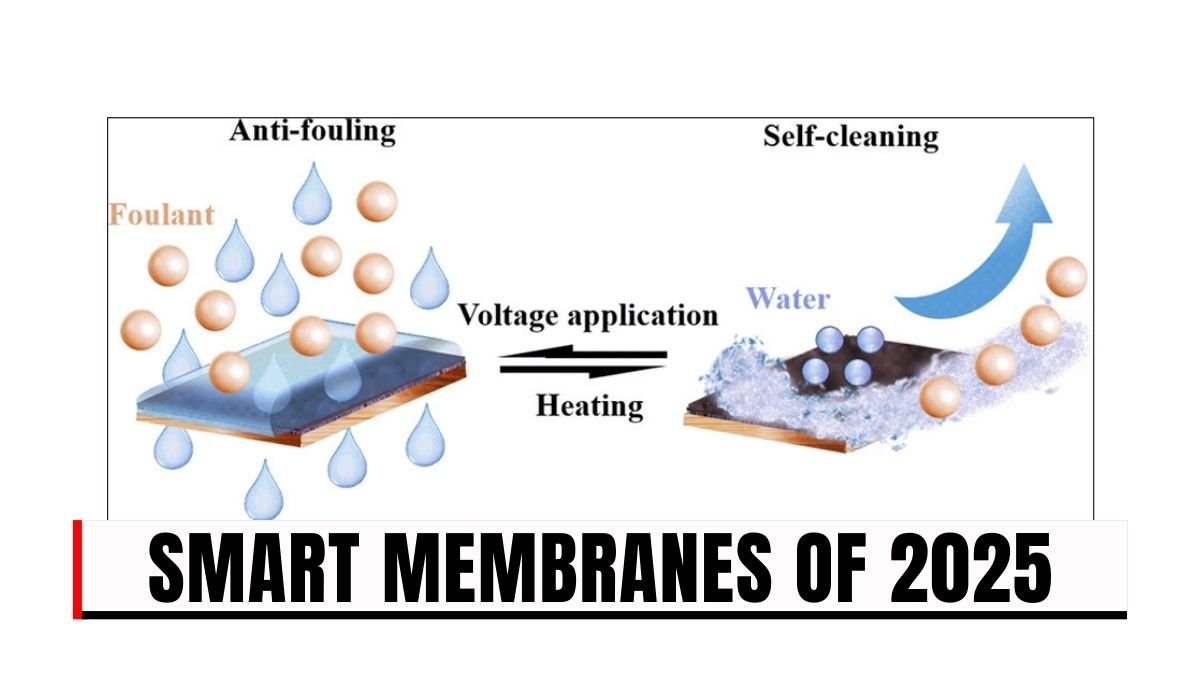Smart Membranes of 2025: In today’s world, clean water, better health services and sustainable industrial processes have become the priority of every country. Membrane technology plays a vital role in achieving these goals. Membrane filtration is being used in many sectors such as water purification, pharmaceutical industry, energy production and food processing. But the biggest challenge of this technology is fouling i.e. deposition of impurities and particles on the membrane, which reduces the filtration capacity and increases the operating cost.
Smart membranes are the solution to this challenge. By 2025, this technology will not be limited to just fouling-resistance, but will also include self-cleaning, responsive and advanced material-based features. Also, the inclusion of artificial intelligence and digitalization will revolutionize this field.
Smart membranes: What will change by 2025?
Smart membranes will be much more advanced than ordinary membranes. They will have features that will not only block impurities but will also be able to clean them themselves. Their design and material will include technologies that will change the functionality of the membrane according to different conditions. By 2025, it is expected that smart membranes will set a new standard of efficiency and reliability in areas such as water purification and bioprocessing.
Self-cleaning mechanism
So far, cleaning of membranes requires repeated manual or chemical cleaning. This not only increases the cost but also reduces the life of the membrane. Smart membranes of 2025 will include stimulus-responsive polymers. These are polymers that can change their structure based on external signals such as light, pH, or temperature. The advantage of this will be that impurities deposited on the membrane will be removed automatically.
In addition, many membranes will have micro-channels through which flushing can be done. That is, the membrane will be able to keep itself clean without human intervention. This feature will make uninterrupted operation possible for a long time.
Better anti-fouling properties
Today’s membranes focus mainly on preventing fouling, but the membranes coming in 2025 will be a step ahead of this. Nanomaterials will be used on their surface, so that impurities will not stick. Hydrophilic coatings will make the surface of the membrane such that water can pass easily but impurities will not get trapped. Some membranes will also have antimicrobial coatings, which will prevent the growth of bacteria and fungi.
These advanced properties will make membranes more durable and their capacity will remain stable. This will have a direct impact on reducing operating costs and sustainability of industrial processes.
Responsive and adaptive performance
Future membranes will not be static but will be able to adapt themselves according to time and situation. Real-time pore size adjustment facility will allow the membrane to change its pore size. For example, if there are more large particles in water, the pores will become smaller and when small molecules are to be separated, the pores will become larger.
Also, if only protein or drug molecules are to be removed in a process, the membrane will adapt itself accordingly. This will improve both selectivity and flux and membranes will prove to be more flexible and efficient.
Use of advanced materials
Advanced materials will play an important role in the development of smart membranes. Nanomaterials such as graphene, nanotubes and nanoparticles will make membranes lighter, stronger and more efficient. Biopolymers will be materials made from natural sources that will be safe for the environment and biodegradable. At the same time, the mixture of composite materials will make the membrane multi-functional.
Membranes made from these materials will be more durable, will work for a long time and will give more production with less energy.
Inclusion of AI and digitalization
The biggest advantage of smart membranes will be that they will be combined with artificial intelligence and digital tools. Through real-time monitoring, sensors installed in the membrane will continuously collect data such as fouling rate, change in flux or presence of chemicals.
If there is any defect in the membrane, AI will warn in advance. Predictive maintenance will also tell when cleaning or replacement will be required. Along with this, AI-based optimization will operate the membranes in such a way that more output is obtained with less energy. This will directly affect reducing operational costs and increasing lifespan.
Future after 2025
Even after 2025, research and development in the field of smart membranes will continue. Scientists will develop membranes that can separate molecules with high accuracy. Their importance will increase even more in the pharmaceutical and bioprocessing industries as they will provide amazing efficiency in separating specific molecules.
Also, these membranes will give more production with less energy, which will reduce the cost of large industries and water purification plants. Future membranes will be durable even in difficult conditions such as highly acidic or alkaline solutions, high temperatures or complex biological mixtures. Due to all this, this technology will become even more reliable, versatile and necessary.
Impact on industrial sectors
Smart membranes will not be limited to laboratories only, but their use will bring major changes in many industries. Their use in the water purification sector will be important in providing clean and safe water. It will play an important role in separating medicines and proteins in the bioprocessing industry.
Smart membranes will also streamline the hydrogen production and energy harvesting process in the energy sector. They will also be used more in the food processing industry to purify milk, juice and other products.
Conclusion
The technology of smart membrane will be a new beginning by 2025. Such membranes will not just serve to filter out impurities, but will also have such functions as automatic cleaning, reactive operation, high-tech materials, and AI.
